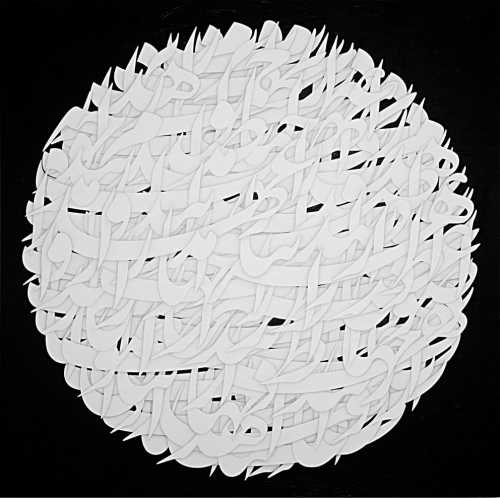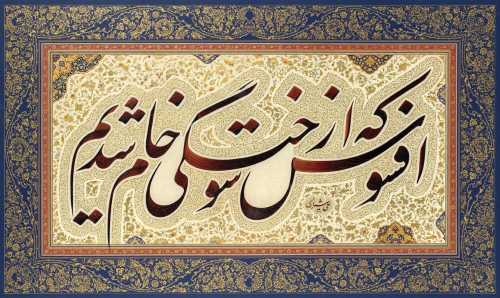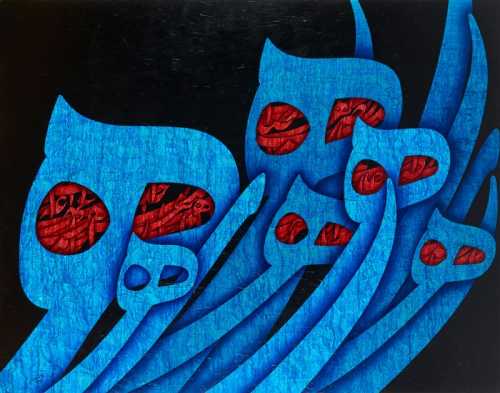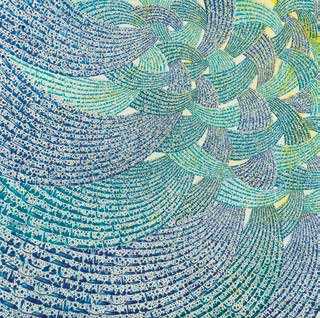- Untitled 2013
- archival print on cotton paper
- Painting, Calligraphy Painting
- 90 * 90 cm
- Editions: 25
- Edition No. 2
Artwork Description
Although Iranian artist Ali Shirazi’s bold and dynamic canvases composed of Persian nasta’liq script are a testament to his classical training as a calligrapher, the artist’s work predominantly reflects his distinctly personal and contemporary interpretation of this traditional art form. These centered compositions, made up of tangled calligraphic forms, reference the Holy Quran, whose verses make up a prayer for God’s divine guidance. The highly symbolic colours of black and white signify purity, peace, and modesty in the Islamic faith, whereas the use of blue in Shirazi’s artwork is perceived as a symbol of protection.
Ali Shirazi was born in 1960 in Shiraz, Iran. He began training in calligraphy at the age of fourteen, obtaining a distinction from the Iranian Calligraphy Society. Shirazi went on to become the Head of the Isfahan Calligraphy Society, and is a member of the High Council of the Iranian Calligraphy Society. The artist’s works are held in various important private and public collections including the Islamic Culture and Communication Organization, the Imam Ali Museum of Tehran, the Tehran Quran Museum, the Sharjah Art Museum, and the Museum of Islamic Art in Doha, Qatar.
More lots by Ali Shirazi
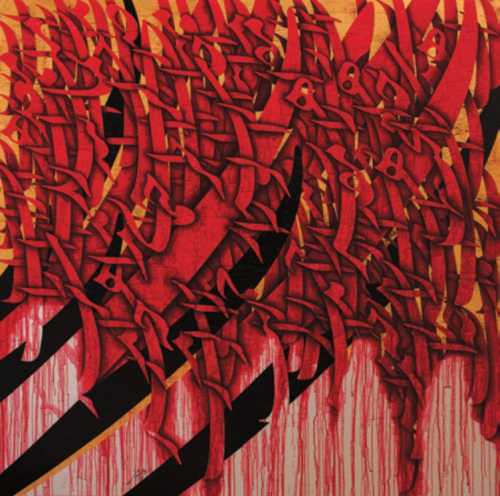
Praising Hakim Omar Khayyam
Estimation
8,000,000,000﷼
13,333 USD
-
12,000,000,000﷼
20,000 USD
Realized Price
18,700,000,000﷼
31,167 USD
87%
Sale Date
Tehran
-
5 July 2024
Realized Price
20,138 USD
Min Estimate
10,940 USD
Max Estimate
15,408 USD
Average Artwork Worth
+49.723%
Average Growth of Artwork Worth
Sales Performance Against Estimates
Average & Median Sold Lot Value
2021 - 2025
Performance vs. Estimate
2021 - 2025
Sell-through Rate
2021 - 2025
Similar Artworks
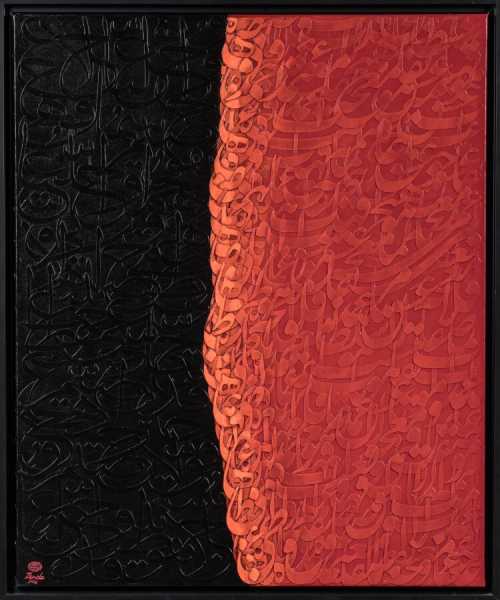
ROUGE ET NOIR
Estimation
€5,000
5,207 USD
-
€6,000
6,249 USD
Realized Price
€4,000
4,166 USD
27.273%
Sale Date
Conan Hotel D'Ainay
-
26 November 2022
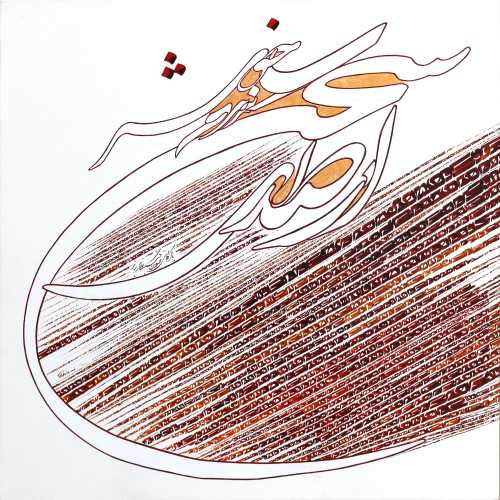
Found Nothing More Joyful Than The Sound Of Words Of Love
Estimation
1,000,000,000﷼
3,884 USD
-
2,000,000,000﷼
7,768 USD
Realized Price
1,050,000,000﷼
4,078 USD
30%
Sell at
Sale Date
Smart Auction
-
1 January 2021
